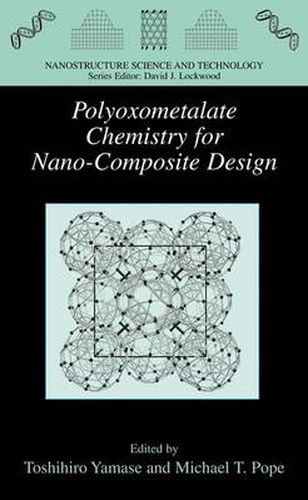Readings Newsletter
Become a Readings Member to make your shopping experience even easier.
Sign in or sign up for free!
You’re not far away from qualifying for FREE standard shipping within Australia
You’ve qualified for FREE standard shipping within Australia
The cart is loading…






This title is printed to order. This book may have been self-published. If so, we cannot guarantee the quality of the content. In the main most books will have gone through the editing process however some may not. We therefore suggest that you be aware of this before ordering this book. If in doubt check either the author or publisher’s details as we are unable to accept any returns unless they are faulty. Please contact us if you have any questions.
Polyoxometalates are discrete early transition metal-oxide cluster anions and comprise a class of inorganic complexes of unrivaled versatility and structural variation in both symmetry and size, with applications in many fields of science. Recent findings of both electron-transfer processes and magnetic exchange-interactions in polyoxometalates with increasing nuclearities, topologies, and dimensionalities, and with combinations of different magnetic metal ions and/or organic moieties in the same lattice attract strong attention towards the design of nano-composites, since the assemblies of metal-oxide lattices ranging from insulators to superconductors form the basis of electronic devices and machines in present-day industries. The editors organized the symposium, Polyoxometalate Chemistry for Nano-Composite Design at the Pacifichem 2000 Congress, held in Honolulu on December 17-19, 2000. Chemists from several international polyoxometalate research groups discussed recent results, including: controlled self-organization processes for the preparation of nano-composites; electronic interactions in magnetic mixed-valence cryptands and coronands; synthesis of the novel polyoxometalates with topological or biological significance; systematic investigations in acid-base and/or redox catalysis for organic transformations; and electronic properties in materials science. It became evident during the symposium that the rapidly growing field of polyoxometalates has important properties pertinent to nano-composites. It is therefore easy for polyoxometalate chemists to envisage a bottom-up approach for their design starting from individual small-size molecules and moieties which possess their own functionalities relevant to electronic/magnetic devices (ferromagnetism, semiconductivity, prot- conductivity, and display), medicine (antitumoral, antiviral, and antimicrobacterial activities), and catalysis.
$9.00 standard shipping within Australia
FREE standard shipping within Australia for orders over $100.00
Express & International shipping calculated at checkout
This title is printed to order. This book may have been self-published. If so, we cannot guarantee the quality of the content. In the main most books will have gone through the editing process however some may not. We therefore suggest that you be aware of this before ordering this book. If in doubt check either the author or publisher’s details as we are unable to accept any returns unless they are faulty. Please contact us if you have any questions.
Polyoxometalates are discrete early transition metal-oxide cluster anions and comprise a class of inorganic complexes of unrivaled versatility and structural variation in both symmetry and size, with applications in many fields of science. Recent findings of both electron-transfer processes and magnetic exchange-interactions in polyoxometalates with increasing nuclearities, topologies, and dimensionalities, and with combinations of different magnetic metal ions and/or organic moieties in the same lattice attract strong attention towards the design of nano-composites, since the assemblies of metal-oxide lattices ranging from insulators to superconductors form the basis of electronic devices and machines in present-day industries. The editors organized the symposium, Polyoxometalate Chemistry for Nano-Composite Design at the Pacifichem 2000 Congress, held in Honolulu on December 17-19, 2000. Chemists from several international polyoxometalate research groups discussed recent results, including: controlled self-organization processes for the preparation of nano-composites; electronic interactions in magnetic mixed-valence cryptands and coronands; synthesis of the novel polyoxometalates with topological or biological significance; systematic investigations in acid-base and/or redox catalysis for organic transformations; and electronic properties in materials science. It became evident during the symposium that the rapidly growing field of polyoxometalates has important properties pertinent to nano-composites. It is therefore easy for polyoxometalate chemists to envisage a bottom-up approach for their design starting from individual small-size molecules and moieties which possess their own functionalities relevant to electronic/magnetic devices (ferromagnetism, semiconductivity, prot- conductivity, and display), medicine (antitumoral, antiviral, and antimicrobacterial activities), and catalysis.